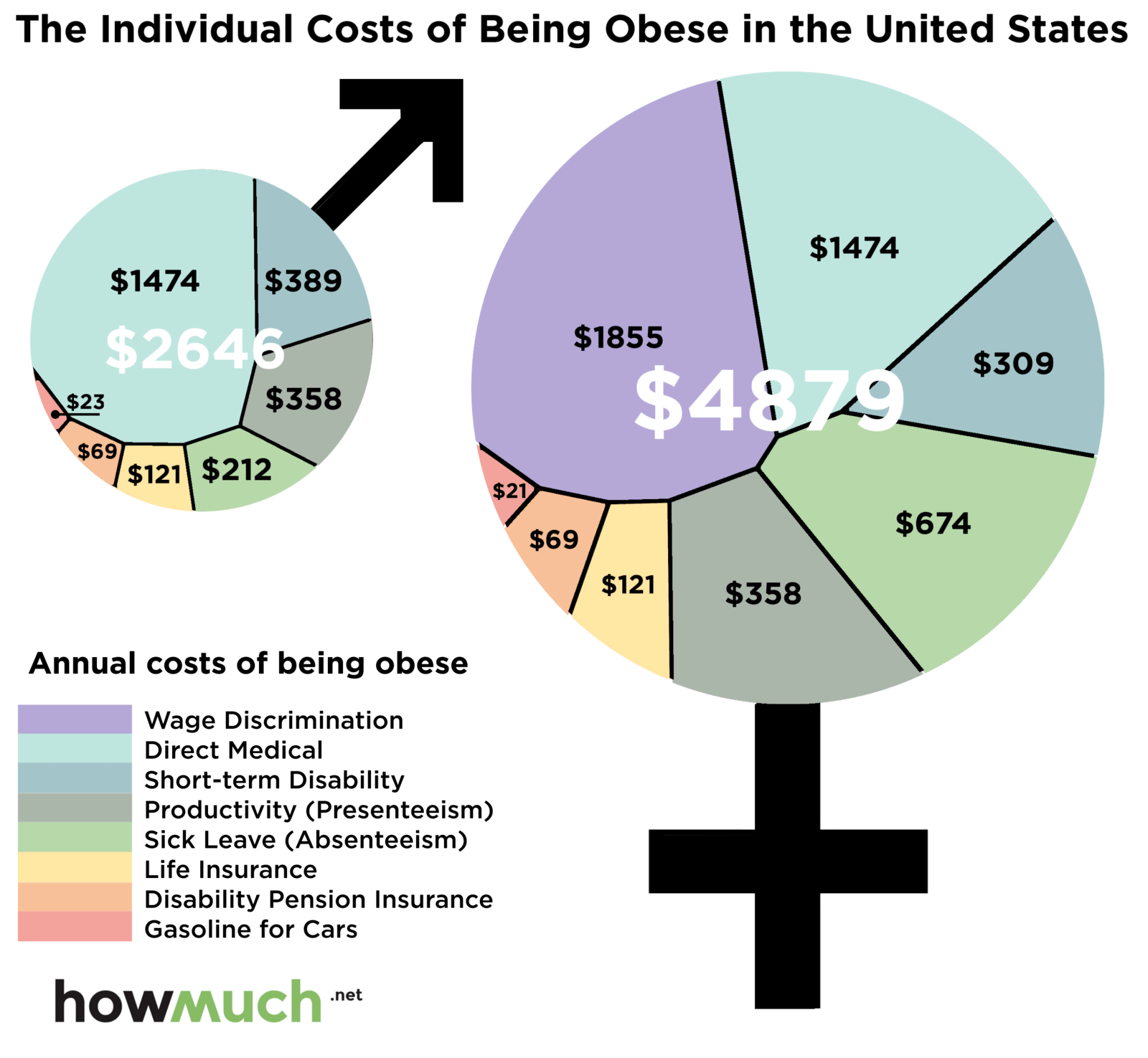
Alabama falls in the middle of the pack when it comes to state obesity rankings in the United States, according to a survey by Gallup and Healthways. 28.1% of Alabamians are obese, as computed by respondents’ self-reported height and weight.
“The consequences of obesity on health are obvious, but the impacts of the epidemic extend even into personal finance and work,” explains HowMuch.net, a cost information website. Researchers at HowMuch.net came to that conclusion after digging into a study by George Washington University that estimates obese individuals are losing thousands of dollars each year from additional health-related costs and lost income.
This chart lays out their findings.

Additional medical expenses related to obesity appear to impact men and women equally, but the GW study says obese women also tend to make less money because of their weight.
“Obese female employees earn relatively less compared to normal-weight female employees,” explains HowMuch.net. “Male employees who are obese do not receive relatively lower wages, according to the research. The result is $1,855 in added costs for obese women.”
Obese individuals also lose income because they tend to miss more days of work.
“The researchers found that obese male employees miss an additional two days of work annually due to illness related to obesity. Obese female employees miss between an extra one and five work days per year.”
In spite of the health and financial concerns related to obesity, Americans don’t seem to be slimming down.
27.1% of the total US population is obese, according to Gallup, which is up from 26.2% in 2012 and 25.5% when Gallup first conducted the survey in 2008.
A medical journal study published in 2012 estimated that “while America holds about 5 percent of the world’s adult population, it accounts for about a third of the excess weight because of obesity.”
“While there are a variety of factors that are often correlated with rising obesity rates, such as an unhealthy food environment, poor eating habits, increasing portion sizes, and inactivity, experts agree that the health consequences of obesity are real,” Dr. James E. Pope, Senior Vice President and Chief Science Officer at Healthways said. “Research has shown that the average healthcare costs for an obese individual are over $1,300 more annually than someone who is not obese. Although slowing and even reversing this trend may seem daunting, even modest weight loss of 5% to 10% of initial body weight can lower the health risks associated with obesity.”
Don’t miss out! Subscribe today to have Alabama’s leading headlines delivered to your inbox.